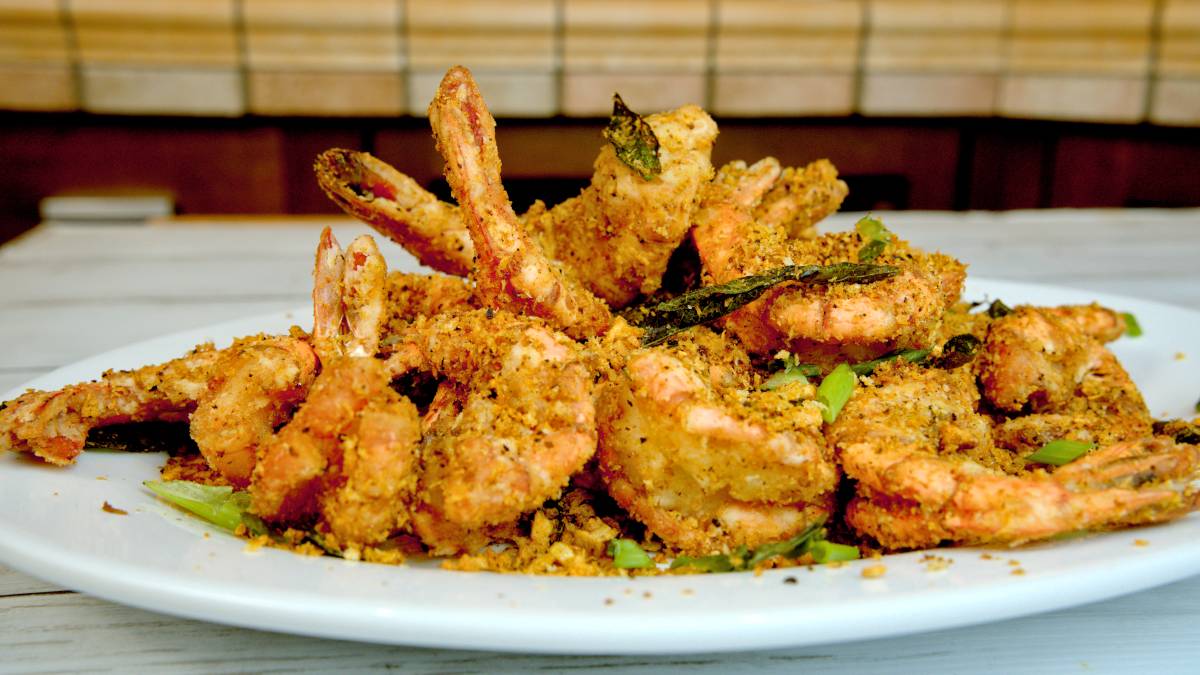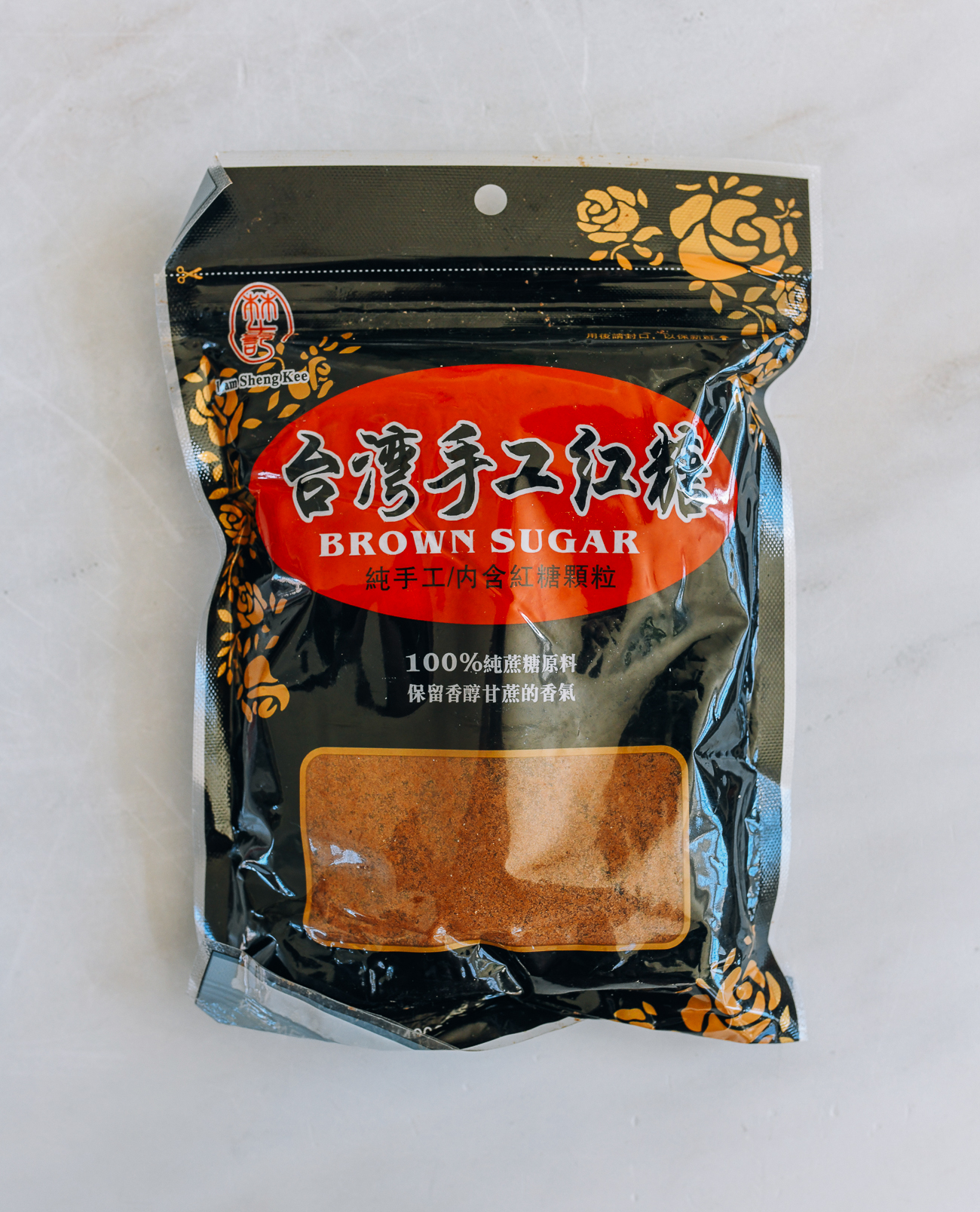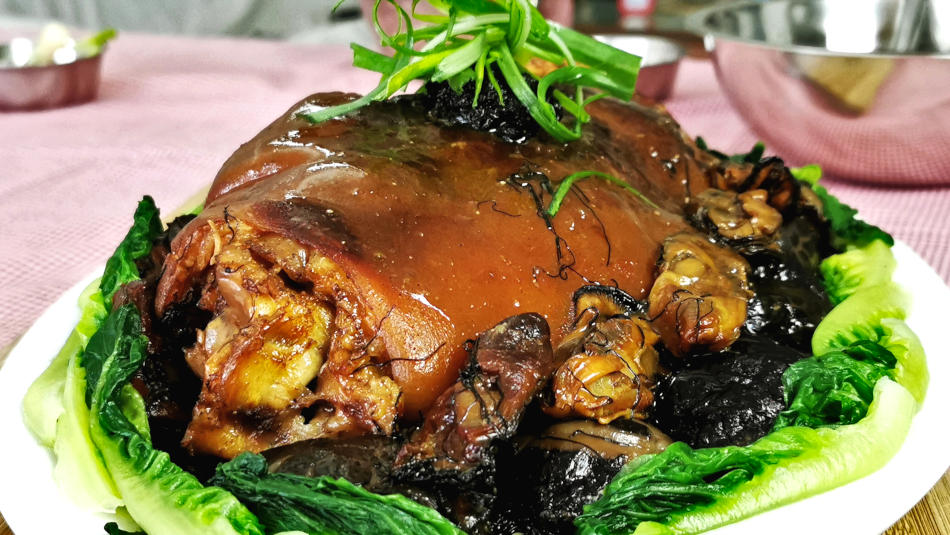Have you ever tasted Hong Kong’s iconic Typhoon Shelter Shrimp (避风塘虾)? Imagine starting with plump, juicy, head-on shrimp, wok-fried over medium-high heat until the shells shatter into crispy perfection. Then, they’re tossed with a mountain of golden fried garlic and breadcrumbs, accented by a hint of diced dried chili. It may appear messy, but the shrimp are irresistibly crunchy and addictive—one of those dishes you can’t stop eating until your fingers are thoroughly licked clean.
This recipe hails from the harbors of Hong Kong, inspired by the vibrant fishing communities. Picture the boat people, crafting bold flavors with simple ingredients like garlic cloves, fermented black beans, and stale breadcrumbs to create a dish that is deeply savory, aromatic, and full of texture.
Are you ready to crack open a cold beer, roll up your sleeves, and fill your kitchen with the unmistakable aroma of Dai Pai Dong (大排档), Hong Kong’s beloved street food stalls? This style of Typhoon Shelter cuisine, packed with flavor, truly embodies authentic Hong Kong cooking.

Why is it called Typhoon Shelter Shrimp? I’ve included a section about this at the end of the article. 👇👇
Note: This post may contain affiliate links. Please read my privacy policy for more info. I may receive commissions for purchases made through links in this post. As an Amazon Associate, I earn from qualifying purchases.
The Main Ingredients Required to Make Typhoon Shelter Shrimp
- Shrimp: The star ingredient is, of course, shrimp. Freshness is non-negotiable. Opt for medium-sized or larger shrimp, ideally tiger prawns, preferably with semi-soft shells. Do not remove the shells; if the heads are still attached, keep them on, as we’ll be deep-frying them until they reach perfect crispiness.
- Garlic: The second key ingredient is garlic—lots of it. Deep-fry the garlic until it turns golden brown and crispy, which imparts the signature flavor of Typhoon Shelter shrimp.
- Bread Crumbs: Plain breadcrumbs or Japanese Panko work well. Store-bought options save you the hassle of making them from scratch.
- Seasonings: Fermented black beans (豆豉) are essential for seasoning. You can use ready-made black bean paste or whole fermented black beans, which should be rinsed and lightly mashed before use.
- Others: Additional ingredients include diced dried chili for heat, chopped spring onions for freshness, a balance of sugar, a pinch of salt, and ground white pepper to round out the seasoning.
- Special Ingredients: For a Malaysian twist, I’ve added Malaysian curry powder and curry leaves, which introduce bold, aromatic flavors. If you prefer the authentic Hong Kong taste, simply omit these two additions.
How to Prepare Hong Kong-style Garlic Shrimp (Typhoon Shelter Shrimp)
- Chop the garlic into small pieces and heat a cup of vegetable oil to deep-fry the garlic over medium-low heat until golden brown and crispy, which takes about five to seven minutes. Remove the garlic and set it aside, reserving the garlic-infused oil for frying the shrimp.
- Thoroughly rinse the shrimp, trim the antennae, and remove part of the head, including the eyes and legs. Ideally, use head-on shrimp for better flavor. Cut open the shell along the back and gently pull out the digestive tract using a toothpick.
- Pat the shrimp dry with a paper towel to eliminate excess moisture. Marinate them with Shaoxing wine, ground white pepper, and a pinch of salt for 15 to 30 minutes. After marinating, coat the shrimp evenly with corn flour before deep-frying.
- Heat enough oil in a deep skillet to around 150°C (300°F) and fry the shrimp in small batches for about one minute or until the shells turn pink. Set the shrimp aside to cool, then deep-fry them again at around 190°C (375°F) for 30 seconds until crispy. This double frying ensures extreme crispiness.
- Pour out most of the oil from the wok, leaving about 2 tablespoons. Add the fermented black beans and curry leaves (if using). Once aromatic, add the diced dried chili and breadcrumbs, stir-frying until the breadcrumbs turn crispy. Return the fried garlic to the wok and mix well.
- Season with curry powder (if using), a pinch of salt, and sugar. Add the fried shrimp back into the wok, increase the heat, and toss everything together to coat the shrimp thoroughly with the garlic and breadcrumbs.
- Give it a final toss, remove the dish from the heat, garnish with spring onions, and serve immediately.

This dish pairs best with steamed rice to balance its bold flavors. Enjoy this iconic dish right in your kitchen!
Why Is This Dish Called Typhoon Shelter Shrimp?
This dish has deep historical ties to Hong Kong’s maritime heritage, particularly its fishing communities. In the 19th and 20th centuries, Victoria Harbour in Hong Kong served as a typhoon shelter, a protected inlet where fishing boats would anchor during storms. These shelters became home to thousands of boat-dwelling families known as the boat people or Tanka people (疍家人 or 艇家).
The Tanka community often built makeshift kitchens and small floating restaurants on their wooden boats. With limited access to ingredients, they relied on what was available: garlic, fermented black beans, and stale breadcrumbs, which were staples in their daily cooking. The intense flavors of garlic and fermented black beans helped mask the smell of the sea while enhancing the overall taste of their food.
While this typhoon shelter-style garlic-fried shrimp became a signature dish, the same cooking style was famously used to prepare typhoon shelter crab, another popular variation. You can find this dish at many Chinese seafood restaurants in Hong Kong and worldwide, wherever Chinese communities exist.
Is There Any Other Variation of Flavor I Can Try?
- Western Style: Add melted butter and grated Parmesan cheese to the breadcrumb mixture for a rich and savory twist.
- Thai-Inspired: Incorporate finely chopped lemongrass, a splash of fish sauce, and shredded kaffir lime leaves for a bold and aromatic Thai flavor.
- Japanese-Style: Deep-fry the shrimp in a light tempura batter for a crispy and delicate texture.
- Taiwanese-Style: Sprinkle some five-spice powder to introduce a complex flavor.
How Do You Store and Reheat the Shrimp?
Storage: Store the shrimp and garlic mixture separately. Once cooled, keep the garlic mixture in an airtight container. It can be left at room temperature for up to a week without significant flavor loss.
Reheat: For best results, freeze the raw, marinated shrimp in a freezer-safe container and deep-fry them fresh when ready to eat. If that’s not possible, you can also freeze the cooked shrimp. Allow them to return to room temperature before reheating in the oven until crispy. Warm the garlic-breadcrumb mixture briefly in a skillet, then toss it with the shrimp before serving.





